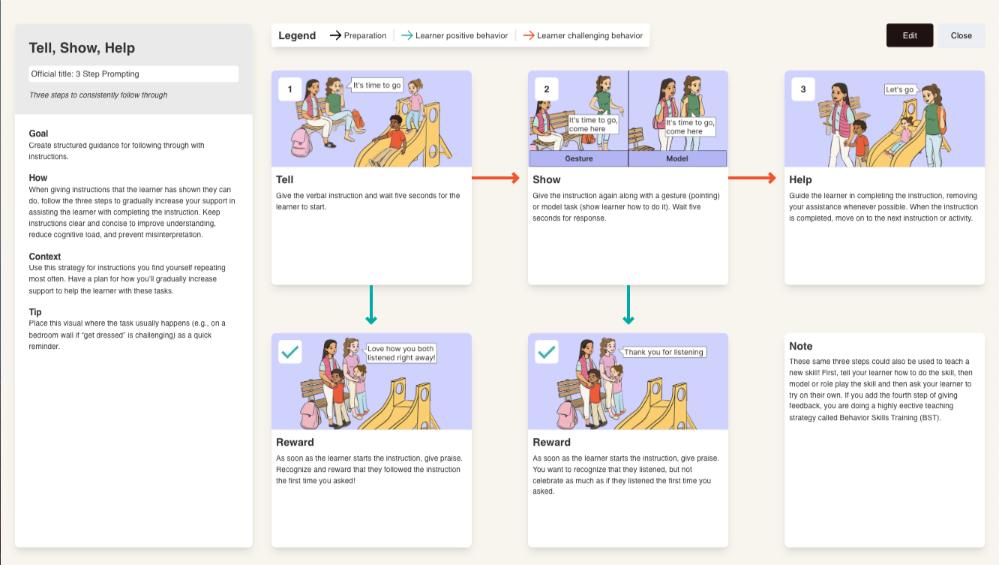
Tell, Show, Help
Three-Step Prompting to Ensure Consistent Follow-Through
Tell, Show, Help—also known as 3-Step Prompting—gives BCBAs, special-education teachers, and parents a clear, repeatable routine for delivering instructions. By starting with a concise verbal cue (“Tell”), adding a quick model or gesture (“Show”), and finishing with hands-on assistance only if needed (“Help”), you maintain instructional clarity, reduce repetition, and build task independence for autistic and other neurodivergent learners.
Why use Tell, Show, Help?
- Higher compliance and faster task completion. Research on graduated prompting shows significant gains in correct responding when support is added systematically rather than all at once.
- Less prompt dependence over time. Fading from verbal to model to minimal physical help teaches learners to rely on the least intrusive cue needed, promoting long-term autonomy.
- Clear expectations that lower frustration. A predictable three-step sequence minimizes cognitive load, preventing misinterpretation and reducing challenging behavior during daily routines.
What you’ll unlock inside BIP Visualized:
- A step-by-step overview of how to use this evidence-based strategy
- Ability to customize images and descriptions to individualize for your learner
- Aligning, printable visual resources to support teaching and generalization
- Ability to add this visual strategy and more to build a custom-made visual BIP tailored to your learner’s needs
Start your free trial to access the Tell, Show, Help strategy and build a personalized, team-friendly visual Behavior Intervention Plan today.
